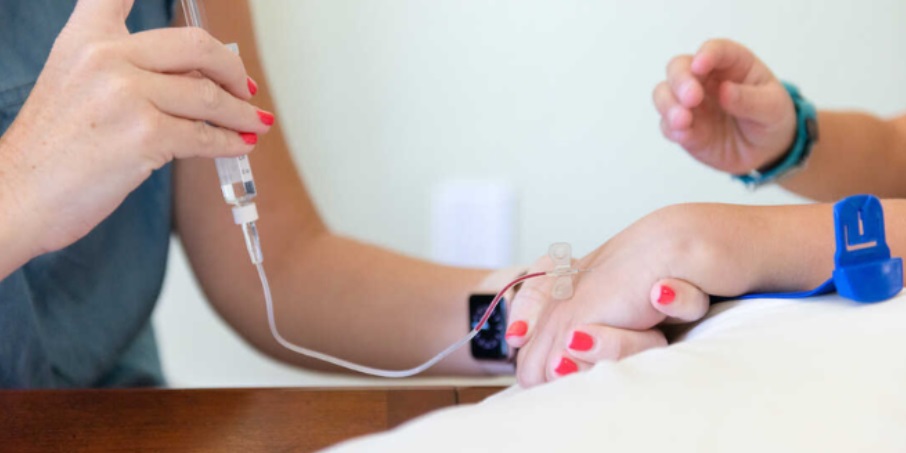
What is Therapeutic Phlebotomy?
While bloodletting was abandoned long ago by modern medicine, the procedure is still used today to treat specific medical conditions.
Phlebotomy — the process of using a needle to remove blood from a vein — is an important tool for diagnosing and evaluating many medical conditions. But in some cases, phlebotomy can also be used as a treatment.
Therapeutic phlebotomy, a procedure that many years ago was called bloodletting, is used to treat or manage certain medical conditions by removing excessive levels of components in the blood, such as iron or red blood cells.
What Conditions Are Treated with Therapeutic Phlebotomy?
Hemochromatosis, also known as iron overload disorder, is a condition in which people have too much iron in their blood. More than 1 million people in the United States have the disease, which can cause damage to the liver, joints, pancreas, and heart. Symptoms of hemochromatosis include fatigue, weight loss, joint pain, and bronze or gray skin color.
Most cases of hemochromatosis are inherited genetically, which is called primary or hereditary hemochromatosis. This disease form is a result of problems with DNA from both parents that cause the body to absorb too much iron.
Secondary hemochromatosis is not inherited. It is caused by anemia, alcoholism, iron pills or injections, or kidney dialysis over a long period. People with certain types of anemia or liver disease need frequent blood transfusions, which can lead to excess iron buildup and overload. The inherited blood disorder thalassemia also requires frequent blood transfusions, which can cause secondary hemochromatosis.
Hemochromatosis is more common in men because women lose iron during their periods and during pregnancy; women’s bodies also store less iron. The disorder is more common in older people as well, because iron toxicity takes years to develop.
In addition to therapeutic phlebotomy, another common treatment for hemochromatosis is chelation therapy, which reduces the amount of iron in the blood.
Polycythemia vera, or PV, is a rare type of blood cancer known as a myeloproliferative neoplasm. It occurs when a person’s bone marrow makes too many red blood cells, which causes the blood to thicken and increase in volume. Some people with PV also make too many white blood cells and platelets. The most common symptoms of PV include headache, sweating, ringing in the ears, blurred vision, dizziness, reddish or purple skin, and unexpected weight loss.
Anyone can develop PV, but the disease most commonly occurs in men over age 60. People with PV are at a higher risk of abnormal blood clots, including deep vein thrombosis (DVT), a type of blood clot that occurs in the deep veins of the arms or legs. A DVT that travels to the lungs can cause a life-threatening clot called a pulmonary embolism. PV also increases the risk of heart attack and stroke.
Therapeutic phlebotomy reduces the number of blood cells and decreases blood volume, which helps prevent clots from forming. Drugs that suppress the formation of blood cells by the bone marrow are another treatment for PV.
Porphyria cutanea tarda, or PCT, is a rare disorder in which painful, blistering lesions develop on sun-exposed skin, such as the face, arms, and hands. The skin is often fragile and may peel or blister after minor trauma.
PCT is caused by deficient levels of the enzyme uroporphyrinogen decarboxylase, or UROD. In roughly 80% of cases, this deficiency is acquired; the remaining 20% are caused by a genetic predisposition to developing the disorder.
Without enough UROD, chemicals in the body called porphyrins cannot make heme, the substance that gives blood its red color. Instead, the porphyrins build up in the body, causing illness. When porphyrins accumulate in the liver, it can cause liver damage and increase the chances of developing cirrhosis and liver cancer.
Regular phlebotomies are a common treatment for PCT, which reduces excess iron and porphyrin levels in the liver. Low doses of the anti-malarial drugs chloroquine and hydroxychloroquine are also sometimes prescribed to reduce iron levels in the liver.
How Is Therapeutic Phlebotomy Performed?
The process of therapeutic phlebotomy is similar to donating blood but requires a prescription from a health care provider. Patients are usually advised to drink plenty of fluids and eat a substantial meal a few hours before the appointment.
A trained phlebotomist performs the procedure in a medical office, hospital, or community blood center. After lying down, the provider checks blood pressure and pulse. Then, after disinfecting the skin, the provider punctures a peripheral vein (usually in the forearm) with an extraction device, which has a needle and is connected to a collection bag.
If there are no complications, it usually takes 10 to 15 minutes to collect one unit (500 milliliters) of blood, which is followed by 20-minute monitoring and a snack. Increased fluid intake over the next four to six hours is advised.
Depending on the condition being treated, therapeutic phlebotomy may be done weekly, monthly, or less often.
Can You Expect Bruising After Drawing Blood?
Bruising of the arm can sometimes develop at the site where the skin was punctured. While the bruise may look dramatic, it’s usually harmless and will disappear within a few days.
Source: HemAware, December, 2023